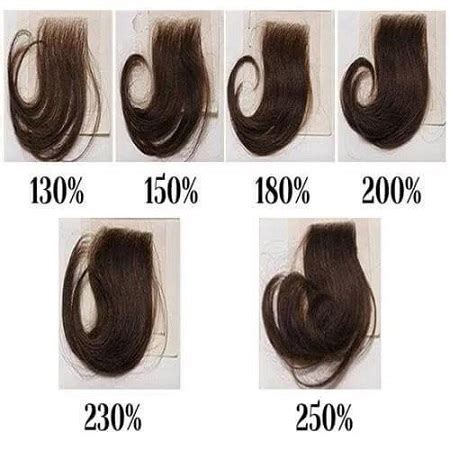When it comes to hair extensions, there are two main types of density: 260 density and 180 density. So, what’s the difference? And which one is right for you?

260 Density
260 density hair extensions are the thickest and fullest type of extensions available. They are made with 260 strands of hair per weft, which gives them a very natural and voluminous look. 260 density extensions are perfect for people who want to add a lot of volume and length to their hair. However, they can also be quite heavy and expensive.
180 Density
180 density hair extensions are less thick and full than 260 density extensions. They are made with 180 strands of hair per weft, which gives them a more natural look. 180 density extensions are a good option for people who want to add some volume and length to their hair without going overboard. They are also lighter and less expensive than 260 density extensions.
Which Density is Right for You?
The best density for you depends on your individual needs and preferences. If you want to add a lot of volume and length to your hair, then 260 density extensions are a good option. However, if you want a more natural look, then 180 density extensions are a better choice.
Here is a table that summarizes the key differences between 260 density and 180 density hair extensions:
| Feature | 260 Density | 180 Density |
|---|---|---|
| Number of strands per weft | 260 | 180 |
| Thickness | Thick and full | Less thick and full |
| Look | Natural and voluminous | More natural |
| Weight | Heavy | Light |
| Price | Expensive | Less expensive |
How to Choose the Right Density
When choosing the right density for your hair extensions, it is important to consider the following factors:
- Your natural hair type: If you have thin hair, then you will need to choose a higher density extension to achieve the desired volume. If you have thick hair, then you can choose a lower density extension.
- The length of your hair: If you have short hair, then you will need to choose a higher density extension to achieve the desired length. If you have long hair, then you can choose a lower density extension.
- Your personal preferences: Ultimately, the best way to choose the right density for your hair extensions is to experiment with different densities until you find the one that you like the best.
FAQs
- Q: What is the difference between 260 density and 180 density hair extensions?
- A: 260 density hair extensions are thicker and fuller than 180 density hair extensions. 260 density extensions are made with 260 strands of hair per weft, while 180 density extensions are made with 180 strands of hair per weft.
- Q: Which density is right for me?
- A: The best density for you depends on your individual needs and preferences. If you want to add a lot of volume and length to your hair, then 260 density extensions are a good option. However, if you want a more natural look, then 180 density extensions are a better choice.
- Q: How do I choose the right density?
- A: When choosing the right density for your hair extensions, it is important to consider your natural hair type, the length of your hair, and your personal preferences.
- Q: How do I care for my hair extensions?
- A: To care for your hair extensions, it is important to wash them regularly, condition them, and brush them gently. You should also avoid using heat styling tools on your hair extensions.
Conclusion
260 density and 180 density hair extensions are both great options for adding volume and length to your hair. The best way to choose the right density for you is to experiment with different densities until you find the one that you like the best.
